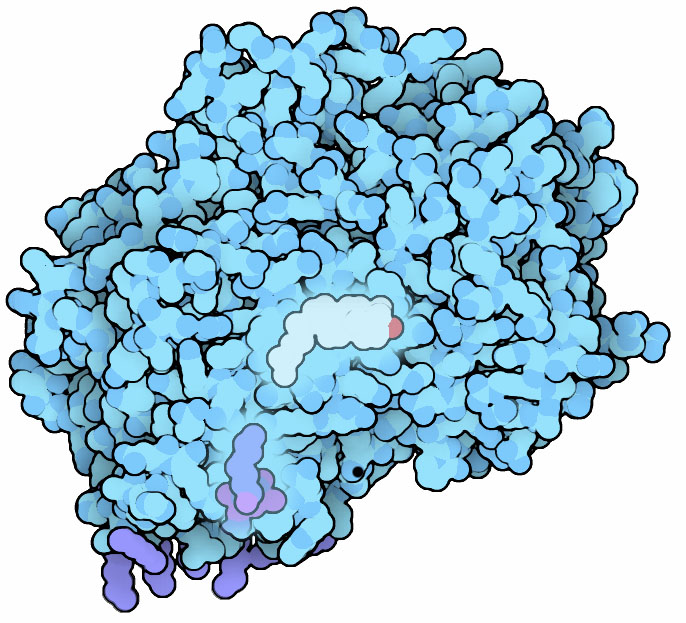|
Inhaltsübersicht | Nanomaschinen | Moleküle | Programme | Kurse | Fun | Links |
||
| > |
Oxidosqualene Cyclase

Cholesterol has gained a bad reputation in recent years. It is absolutely essential in our lives: it is needed to keep our membranes fluid and it is the raw material used to build a host of important molecules such as vitamin D and steroid hormones. However, elevated levels of cholesterol (for instance from a fat-rich diet) have been linked to the formation of atherosclerosis and heart disease. Today, doctors suggest that a combination of a healthy low-fat diet and exercise will keep these two faces of cholesterol in balance.
Building Cholesterol
Cholesterol is a bulky lipid molecule, composed of four linked rings of carbon decorated with hydrogen atoms and a single oxygen atom. A collection of two dozen enzymes is needed to build cholesterol from simple starting compounds. The enzyme shown here, oxidosqualene cyclase (PDB entry 1w6k), performs the most complicated step in this process. It takes a long thin carbon chain, oxidosqualene, and folds it up, creating the four linked rings. The enzyme structure shown here has the final product lanosterol bound in the active site, shown here in white.
Greasy Substrates
Both oxidosqualene and lanosterol are mostly hydrocarbon, and thus are not very soluble in water. The enzyme solves this problem by sticking to the membrane in microsomes inside the cell. It then can pull oxidosqualene directly out of the membrane, and release lanosterol back there. The structure shown here includes several small lipids, shown in purple, bound on the side of the protein that sticks to the membrane. You can also see one of these lipids slipping up into a tunnel that leads into the active site.
Last changed by: A.Honegger,